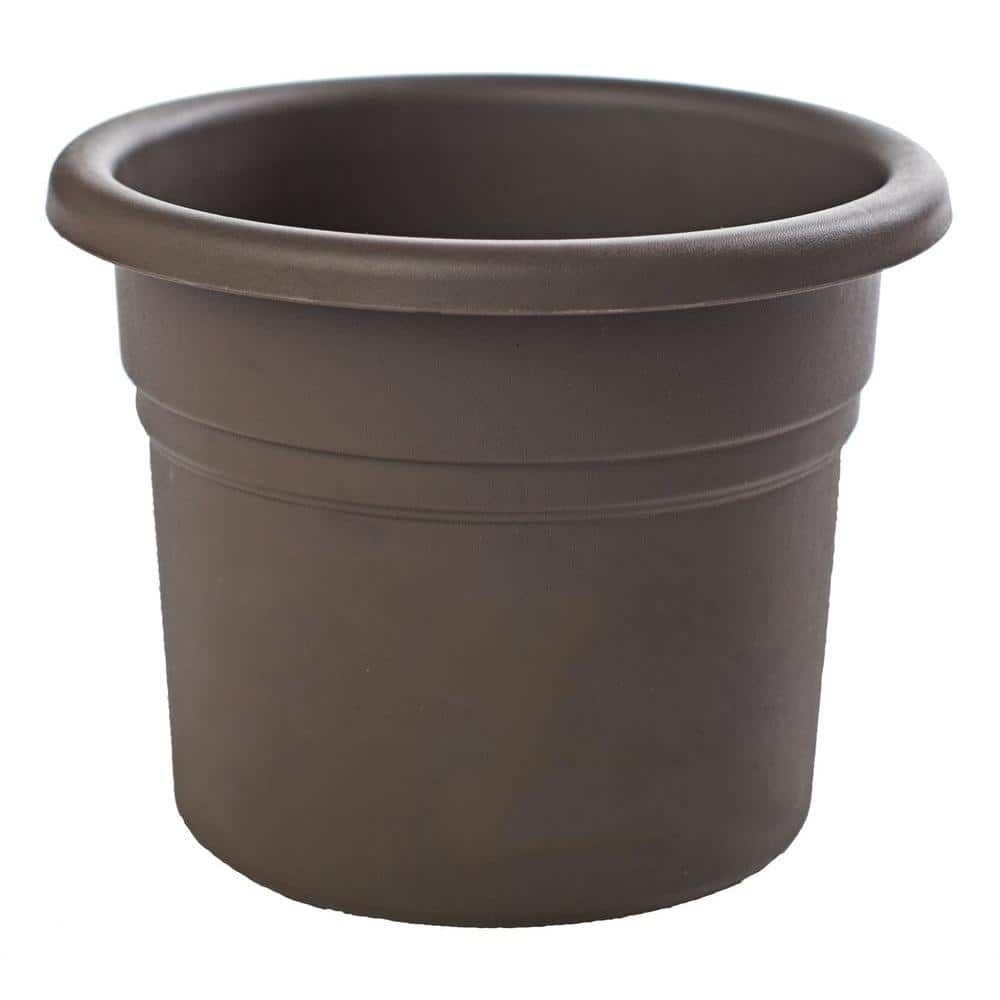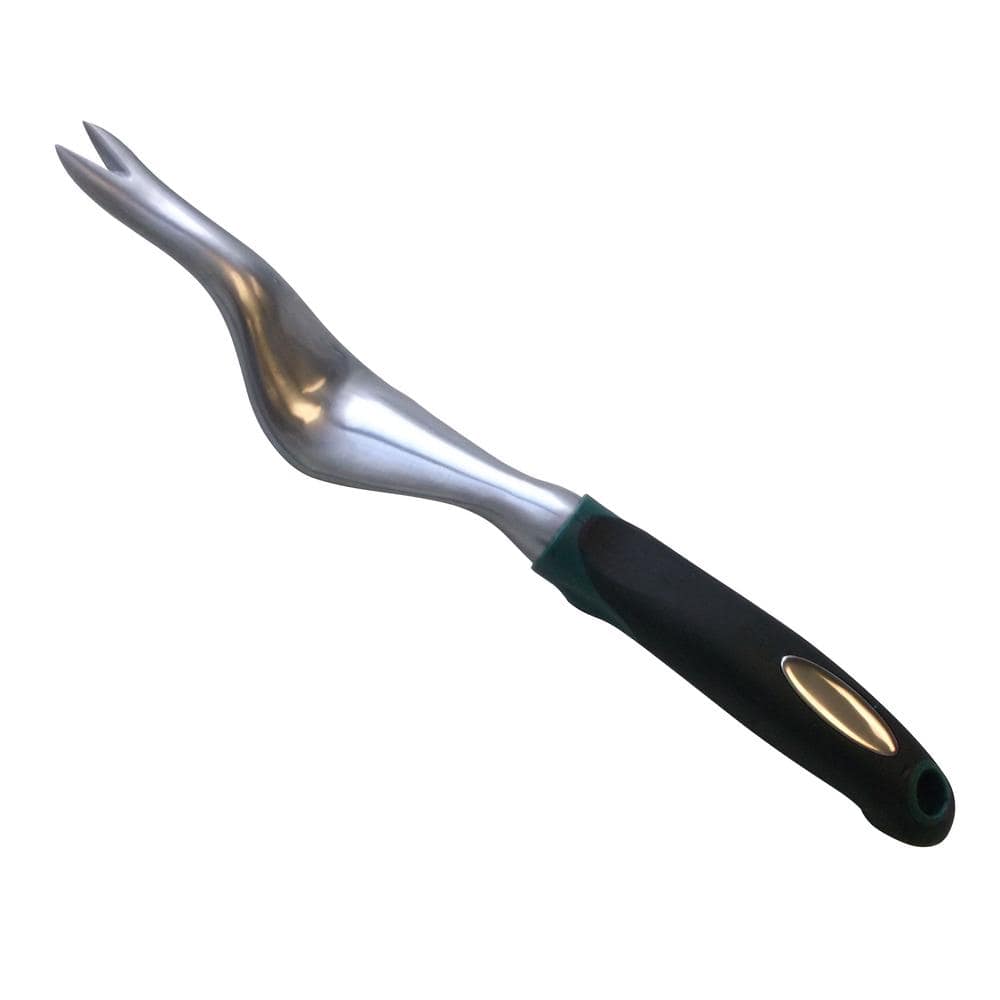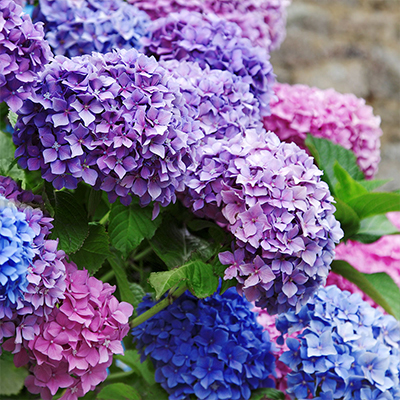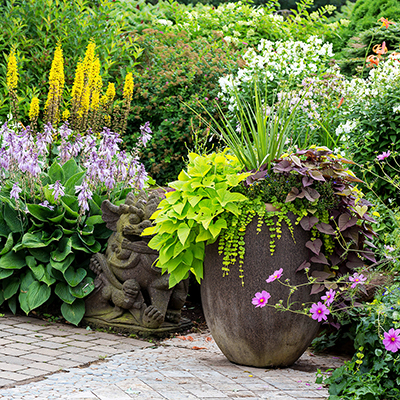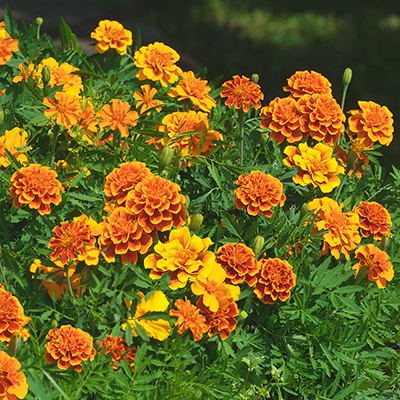Know the Difference Between Annuals vs. Perennials

Last updated January 31, 2024
When shopping for plants, you’re likely to read and hear new terms. One of the biggest areas of confusion for beginning gardeners is the difference between annuals and perennials. If these terms have you scratching your head, never fear. This guide will define both types of plants and explain how annuals and perennials differ. By the end, you’ll be ready to choose the best options for your flower beds and containers.
Table of Contents
What are Annuals?
What are Perennials?
Hardiness Zones
Annuals vs. Perennials Bloom Time and Cost
Perks of Perennials
Be Creative with Annuals
What are Annuals?

An annual is a plant that produces colorful blooms all season long and lasts for just one season. If you want to enjoy the beauty of an annual the following year, you’ll need to plant them again. Some examples of annuals for most of the U.S. include:
- Begonia
- Caladium
- Calibrachoa
- Geranium
- Hibiscus
- Impatiens
- Lobelia
- Marigold
- Mum
- Nasturtium
- Pansy
- Periwinkle
- Petunia
- Zinnia
Tip: Try planting annuals in planters and pots. You can fill your containers with new colorful flowering plants each year to refresh your outdoor living space.
What are Perennials?

You plant perennials only once because they return year after year. As a result, they’re a good pick for gardeners building a lasting landscape. What's perennial in your area depends on winter cold and summer heat. Learning your area's USDA hardiness zone will help you choose the right annuals and perennials for your garden.
Some examples of perennials for most of the U.S. include:
- Black-eyed Susan (rudbeckia)
- Clematis
- Coneflower
- Coreopsis
- Daisy
- Daylily
- Hellebore
- Hosta
- Lantana (perennial varieties)
- Lavender
- Peony
- Phlox
- Rose
- Salvia (perennial varieties)
A bonus with perennials is that they can grow big enough to divide over time. When a plant reaches this point, split the plant and place elsewhere in your garden or share with gardening friends.
There's another category of plants between annuals and perennials: biennials. Biennials take two seasons to complete a life cycle. After planting, biennials grow through the first warm season, then go dormant. In their second year, they flower and produce seed, then die. Popular biennials include foxglove, parsley, hollyhock and delphinium. In the garden, treat biennials like short-lived perennials.
Hardiness Zones

One reason why annuals and perennials can seem so mysterious is that a specific plant could be either, depending on where you live. All plants prefer certain types of weather. Some can withstand frigid cold weather, while others need mild or warm temperatures year-round.
If you live in a place with cold winters, a heat-loving perennial might bloom in the summer but then die when winter comes. In this case, the plant performs like an annual in your zone because it won’t bloom the next year.
The U.S. Department of Agriculture (USDA) takes the guesswork out of choosing plants based on your climate. Its hardiness zone system assigns numbers to regions with similar weather patterns across the U.S. When you know your hardiness zone, you can select perennials that can take the average minimum temperatures where you live. Look on plant tags for phrases like "annual in zones 4 and 5, perennial in zones 6 to 10." The USDA hardiness zone map here is the 2023 updated version. To find your hardiness zone, locate your site on the map, note the color and match with the key on the right. Use the hardiness zone number as a guide when selecting plants for your garden.
Annuals vs. Perennials Bloom Time and Cost

Bloom time is a major difference between annuals and perennials. Perennials often have shorter blooming periods while annuals bloom throughout the growing season.
With the right care, you can enjoy annuals from summer until first frost. Some annuals require deadheading to keep blooming. To deadhead, use pruning snips to remove faded and dead flowers from plants. Check plant tags to find out if deadheading will benefit the annuals in your garden.
Cost is a factor when choosing annuals and perennials. Set a budget before you shop and think about how much you want to invest each year. For a budget-friendly first flower garden, annuals may be the better option. They're low-maintenance and offer up color all season long. Perennials require more upfront investment but come back year after year.
Perks of Perennials

One of gardening's simple pleasures is watching bees, birds and other insects visit your landscape. In the gardening world, insects and birds collect and move pollen from one plant to another.
Perennials live in your garden year after year and support pollinating insects' life cycles. In your garden, you'll observe that pollinating insects prefer some plants over others.
Sometimes preferred plants are native species or nativars (cultivated selections of native straight species). Get involved with local gardening groups to learn the native species in your area and the best pollinator plants, annual and perennial, for your garden.
Popular Perennial Pollinator Favorites:
- Allium
- Bee balm (monarda)
- Catmint
- Clematis
- Coneflower (echinacea)
- Dianthus
- Lavender
- Russian Sage
- Salvia (perennial)
- Sunflower (perennial)
Be Creative with Annuals

For many gardeners, part of the fun is growing new plants. It's like decorating your garden. You might want to fill your beds and containers with new colors each spring or see what it’s like to grow different types of flowers.
If you want the freedom to experiment, annuals are a good option. Each year, you can start things off fresh. If you don’t like the finished look, there’s no commitment. You can change it all when it's time to plant again.
Favorite Colorful Summer Annuals:
Mix Annuals and Perennials

Gardens often look their most beautiful with a mix of annuals and perennials. Since perennials have shorter blooming times, adding annuals keeps your beds colorful all season. A blend of both can also cut down on maintenance. You’ll have some plants that need very little attention and others that require more tender loving care.
Tip: Choose perennials for foliage as well as blooms. You want foliage that holds interest after flowers fade.
Care Tips

- Perennials require less upkeep once they’re well established. To care for perennials, add mulch to insulate, prevent weeds and hold moisture. Water in early morning when soil is dry, especially during drought or extreme heat.
- When dividing perennials, use a shovel to dig up the entire plant. Use your shovel or a garden knife and split the plant into two or more new plants. Divide perennials in late winter before they bloom, or in fall before they go dormant.
- With annuals, you’re more likely to water frequently and apply fertilizer to support growth. Annuals may also need more organic pest control products to thrive. The good news is that by selecting annuals that fit your yard's light, soil and moisture conditions, you'll likely cut down on maintenance.
With careful planning, you can mix annuals and perennials with beautiful results. Use the natural light patterns in your yard to choose plants, and keep your growing zone in mind as you compare options. Ready to get the outdoor plants for every bed and container in your garden? Use The Home Depot Mobile App to locate products and check inventory. We’ll take you to the exact aisle and bay.


